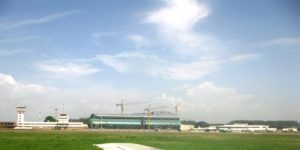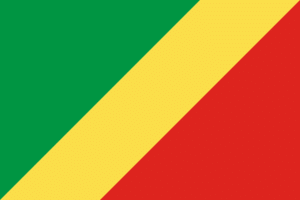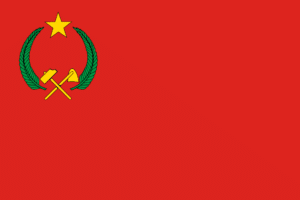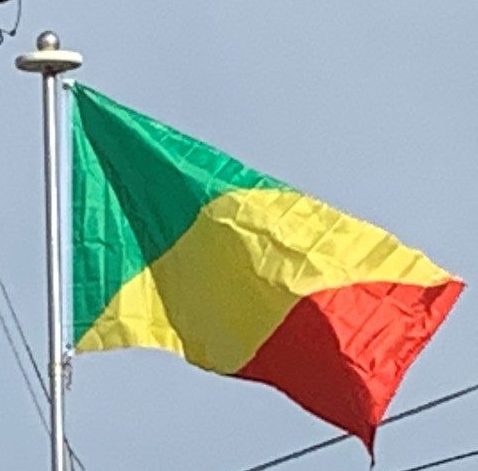The GDP of the Republic of the Congo grew by 6% in 2014 and is expected to have grown by 7.5% in 2015.
In 2018, the Republic of the Congo joined the Organization of Petroleum Exporting Countries.
Transportation:
Transport in the Republic of the Congo includes land, air and water transportation. The country’s rail system was built by forced laborers during the 1930s and largely remains in operation. There are also over 1000 km of paved roads and two major international airports (Maya-Maya Airport and Pointe-Noire Airport) which have flights to destinations in Europe, Africa, and the Middle East. The country also has a large port on the Atlantic Ocean at Pointe-Noire and others along the Congo River at Brazzaville and Impfondo.

Flag of the Republic of the Congo:
The national flag of the Republic of the Congo consists of a yellow diagonal band divided diagonally from the lower hoist-side corner, with a green upper triangle and red lower triangle. Adopted in 1959 to replace the French Tricolour, it was the flag of the Republic of the Congo until 1970, when the People’s Republic of the Congo was established. The new regime changed the flag to a red field with the coat of arms of the People’s Republic in the canton. This version was utilized until the regime collapsed in 1991. The new government promptly restored the original pre-1970 flag.
Under French colonial rule over French Congo, the authorities forbade the colony from utilizing its own distinctive colonial flag. This was because they were worried that this could increase nationalistic sentiment and lead to calls for independence. However, with the rise of the decolonization movement in Africa, the French were obliged to grant limited autonomy to the Congo as a self-governing republic within the French Community. This was granted on November 28, 1958, after a referendum was held and nine months later, the Legislative Assembly began deliberating over a national flag.

The new flag was officially adopted on September 15, 1959 and remained unchanged when the French Congo became an independent state less than a year later on August 15, 1960. It was hoisted on top of the building that formerly housed the French high commission to mark the proclamation of independence. In 1968, a coup d’état took place in the country, with the new government proclaiming the People’s Republic of the Congo a year later. By doing so, it became the first Marxist–Leninist country in Africa. In order to symbolize the revolutionary change, the regime instituted a new national anthem and chose a new flag. This featured a red field charged with the country’s new coat of arms—a gold star with an overlapping hammer and hoe encircled by a wreath—in the top-left canton. The design was inspired by that of the Soviet Union’s flag.

The red flag remained in place until 1991, when economic problems and the weakening of the Soviet Union’s power due to the Revolutions of 1989 culminated in democratic elections and ultimately, the collapse of the People’s Republic of the Congo. The National Conference, which oversaw the transition to a democratic government, reinstated the original flag from 1959 on June 10, 1991. The colours and shapes on the flag are mentioned in Article 5 of the constitution of the Republic of the Congo.
